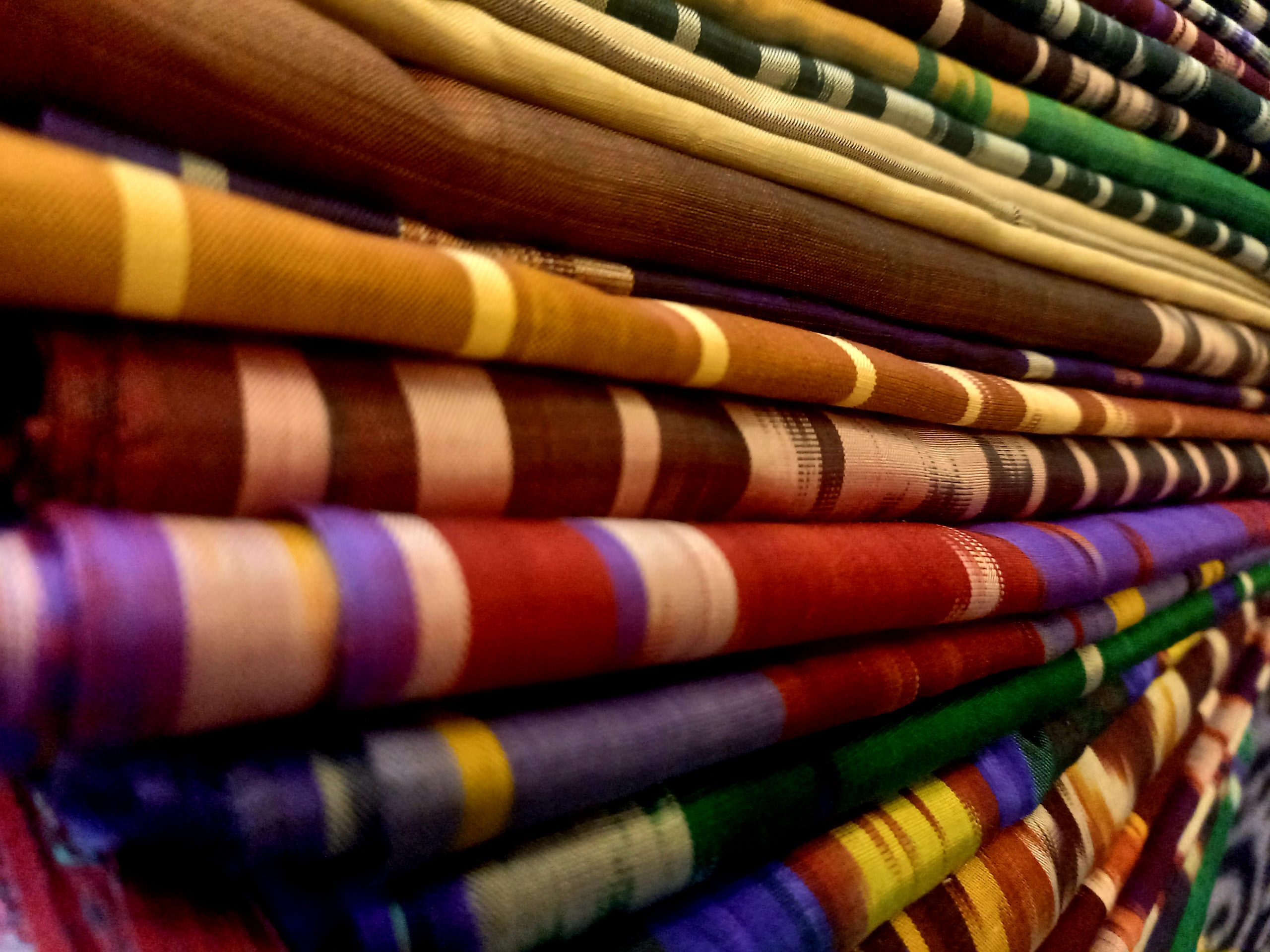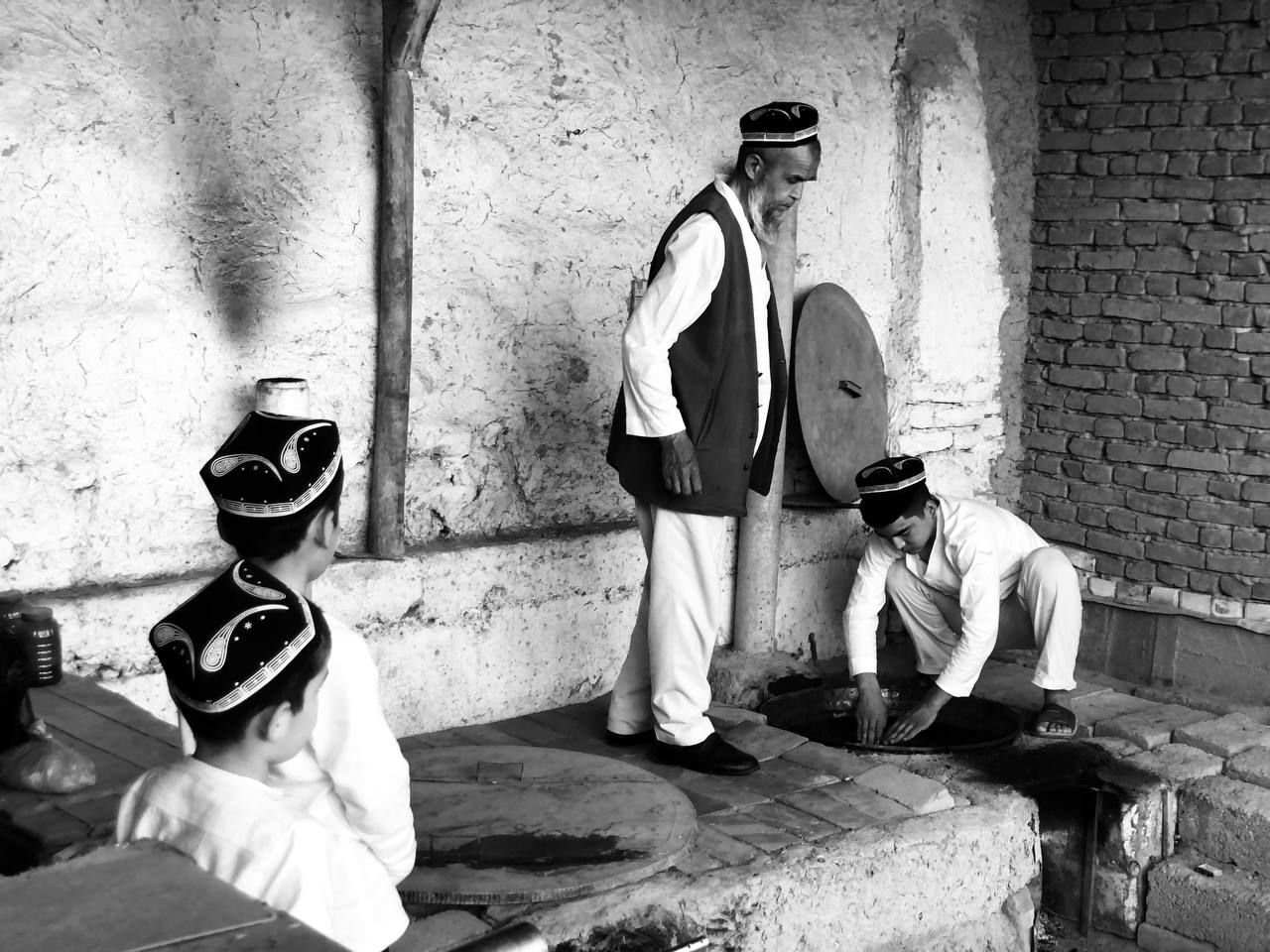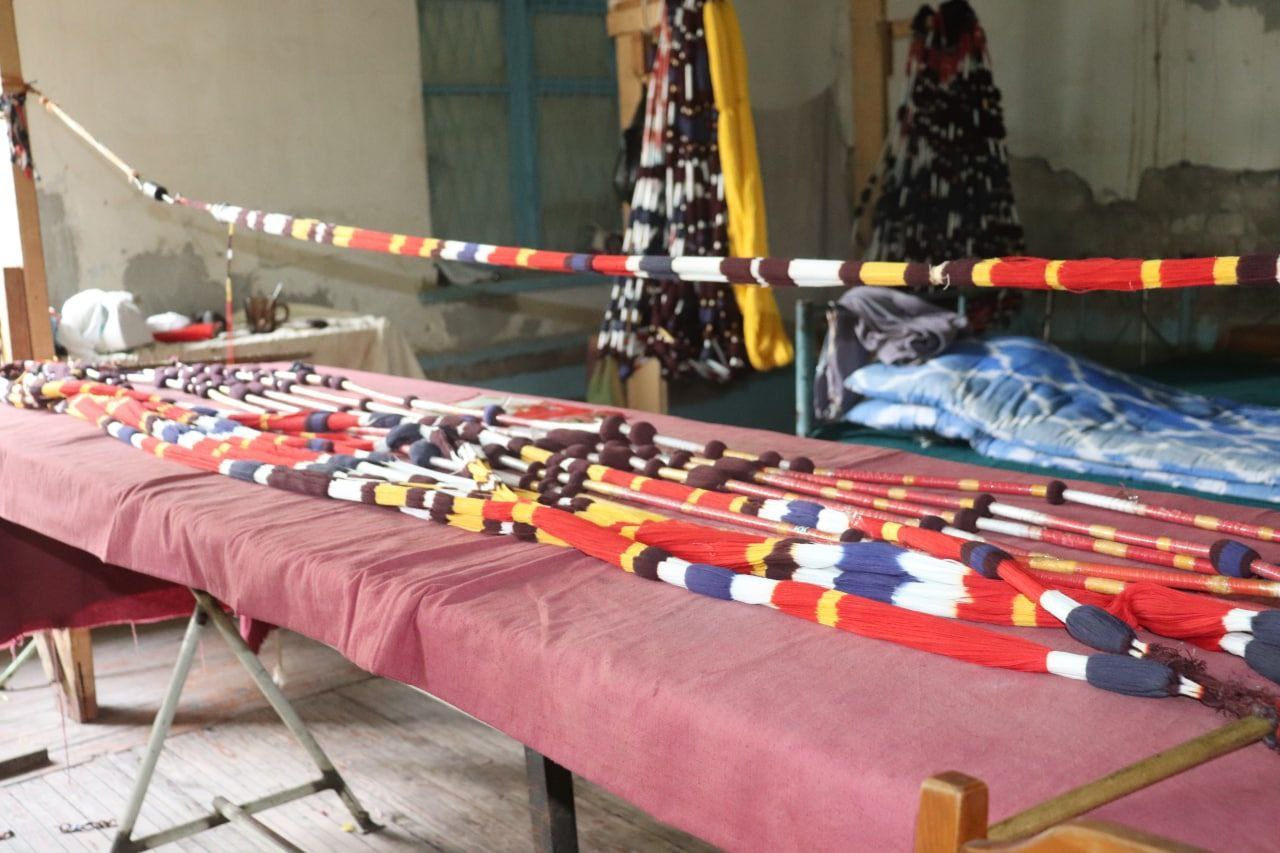How the ancient traditions of adras and ikat production are carried on in modern Uzbekistan
How the ancient traditions of adras and ikat production are carried on in modern Uzbekistan
For a long time, the secrets of making traditional fabrics in Uzbekistan were passed down from generation to generation. But during the times of the Soviet Union, many masters were exiled, and the craftsmanship of making adras and ikat was nearly lost. Now their descendants are reviving the work of their ancestors.

Margilan – one of the ancient cities of Central Asia, through which passed the Great Silk Road, located in the Fergana Valley of Uzbekistan. It is considered a center of silk production and silk goods. In October this year, the International festival of traditional fabrics Atlas Bayrami was held there.
Nowadays, handmade silk fabrics are the heritage of the country and an integral part of the national clothing and culture in Uzbekistan.
Atlas, adras, and ikat, natural fabrics with a unique, inherent only to these regions, abr, print, are considered the hallmark of Uzbekistan and Tajikistan. Their production is carefully preserved, and manufacturing secrets have been handed down from generation to generation for many centuries.
At present, the descendants of the masters of the past are trying to revive the work of their ancestors, using old techniques and methods.
Nurmuhammad Valiev, a fourth-generation crafter. He says his grandfather was a craftsman until 1961, and then he went to work for a government organization because private businesses were forbidden then.
“Now my sons and I are trying to re-establish the production of our ancestors. We consult and try to combine the old with the modern. For example, combine fabrics – half ornaments, half monochrome fabrics. Also, we experiment with the material of yarn: silk with lambswool, and cotton with wool. It seems to come out quite well and customers like it,” he says.

Photo from personal archive
Adras is a natural hand-woven fabric that consists of 50% wool fibers and 50% cotton. It is classified as a type of abr cloth because its abstract patterns resemble light feather clouds (the word “abr” is translated from Tajik as “cloud”).
The origin of this unique pattern is not known for certain. There is a legend among Tajiks about the artist, who once, sitting by the river, saw the reflection of the sky and clouds. He was struck by the shimmering colorful ripples and the way the clouds changed shape because of the stream. The artist immediately went to the weavers and drew them a pattern.
Another legend tells of a poor weaver in love with a girl. For the sake of his love, he created an amazingly beautiful silk fabric. Its patterns were reminiscent of light clouds reflecting on the surface of a lake iridescently colored by the sunrays, with barely perceptible ripples. Later, the word “abr” (“cloud”) began to be used to name the style of the coloring of threads, and fabrics began to be called abr.
The process of making adras is called “ikat”. It is labor-intensive and complicated. A distinctive characteristic of traditional fabric making in such a way is that the threads are dyed long before the craftsman sets down at the weaving loom.

The entire process consists of more than 35 steps. Before dyeing, the master ties each strand to protect those areas that will not be dyed in a specific color. The strands are tied into bundles and lowered into the dye. The strands remain white in the areas where the tie was made. When the dyeing of the threads is complete, they are stretched on a loom and woven by hand. The fabric is then processed. By coloring the threads in parts, the very pattern that is recognized all over the world gets created.
The tradition of weaving adras by “ikat” was passed from generation to generation, from master to student, and from father to son. However, with the advent of Soviet power, the production of handicrafts became illegal, the activity itself was considered commercial, and many prominent artisans were arrested and sent into exile.
Muhammaddavlat Umuraliev, a skilled textile manufacturer, decided to restore the good name of his business and revive the family business.
“On my father’s side I have all merchants, and on my mother’s side – cloth makers. My grandfather, Makhmudjon Mirzoev, was caught in Soviet times and sent into exile to Siberia, because of which our generation interrupted its activities. Around 10 more hereditary craftsmen were imprisoned along with him, including Imbrohimjon Davidov – an outstanding figure in this industry. Only my grandfather returned from exile, but he abandoned his activities,” Umuraliev said.

Photo from personal archive
Muhammaddavlat Umuraliev started reviving the tradition of hand weaving after the independence of Uzbekistan. In his work, he tries to preserve the tradition of weaving by hand.
“My team has to use chemical dyes to dye yarns, as they are convenient to work with. And partly, at the request of the customer, we use natural dyes. Right now I am the only one in our family who does handmade silk fabrics. I hope that my love for this craft will be passed on to my grandchildren,” Umuraliev said.
Global recognition and growing popularity
Abr textiles and their vibrant patterns that resemble the feathers of clouds are in high demand among designers and tourists. For example, Nurmukhammad Valiev’s workshop supplies its fabrics to designers in Astana and Bishkek and also participates in various fashion shows. Recently, according to artisans-weavers, this fabric has been purchased more and more by local residents as well.

Accessories made of abr cloth became popular – bags, jewelry, they are also used as decorations.
Due to its uniqueness, the colorful print has gained popularity abroad as well. Famous couturiers and fashion houses such as Dior, Belle Ikat, Oscar De La Renta, and Isabel Marant are inspired by the colors and palettes of national fabrics, as well as the peculiarity of their manufacture to create images in their collections.
In Spring 2022, fashion house Ralph Lauren presented a new spring collection made of ikat, inspired by the ancient traditions of weavers in Tajikistan and Uzbekistan.
“Ikat prints reimagine timeless silhouettes, and clothes made from this fabric create new unique and effortless looks,” Ralph Lauren’s fashion designers stressed.
Local designers also promote traditional ikat or adras fabrics and their products internationally. For example, the Anor Atelier brand led by Dilnoza Umirzakova presented a spring-summer 2019 collection of national silk garments at Milan Fashion Week.
The government of Uzbekistan also actively supports the development of traditional crafts – all artisans are freed from taxes and customs duties.
And since 2017, the centuries-old technology of making silk fabrics by the “ikat” method has been included in the UNESCO register of best practices for the preservation of intangible cultural heritage.



